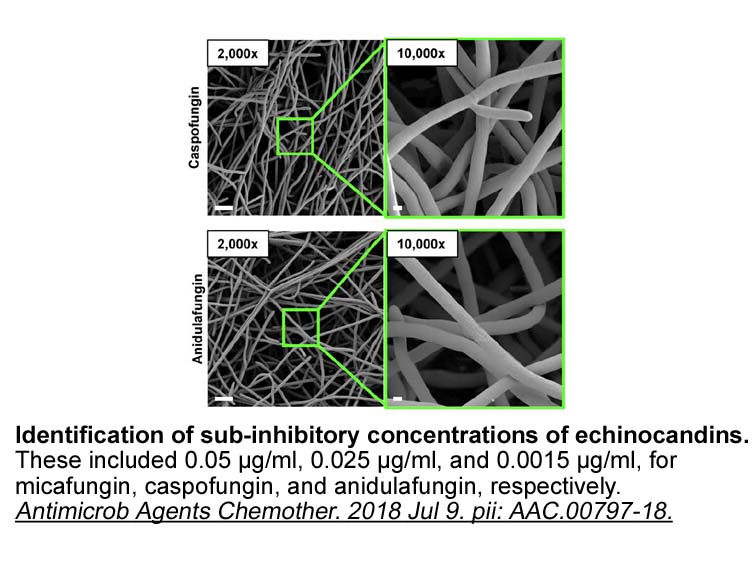Archives
Matrix metalloprotease inhibitors are increasingly
Matrix metalloprotease inhibitors are increasingly available and tested for other indications in clinical trials. The present study suggests that either ADAM10 or TACE inhibition alone will not maximally restore leukocyte Axl function. We found that lower doses of ADAM10/TACE inhibitors exhibit similarly synergistic upregulation of Axl versus either inhibitor alone by flow cytometry (data not shown). This suggests that the observed Axl rescue is not due to any off-target effects of either inhibitor. Taken together, these data further suggest that dual inhibition using multiple inhibitors or a multi-selective inhibitor that spares other proteases may improve macrophage phenotypes in vivo. Small molecule XL784, for instance, recently completed Phase 2 clinical testing in diabetic nephropathy and selectively inhibits bot h proteases while sparing other close family members [52]. We previously reviewed how influencing macrophage phenotypes in SLE may offer an effective treatment strategy [53]. Continued investigation into this treatment strategy will be required to confirm these effects.
In conclusion, our results show that SLE macrophage proteases ADAM10 and TACE (ADAM17) shear surface Axl and abrogate anti-inflammatory Gas6-mediated Twist induction. Combined with previous reports, our data suggest that Axl loss may contribute to pathology in some SLE patients. On a broader note, the increased Ki16425 sale of several disease mediators in lupus, including TNF, CXCL16, EGFR ligand, and others may all be the consequence of heightened ADAM metalloproteases in this disease [44]. Thus the study may further suggest the exploration of combined ADAM10/TACE inhibition as a treatment for SLE. Additional study is warranted.
h proteases while sparing other close family members [52]. We previously reviewed how influencing macrophage phenotypes in SLE may offer an effective treatment strategy [53]. Continued investigation into this treatment strategy will be required to confirm these effects.
In conclusion, our results show that SLE macrophage proteases ADAM10 and TACE (ADAM17) shear surface Axl and abrogate anti-inflammatory Gas6-mediated Twist induction. Combined with previous reports, our data suggest that Axl loss may contribute to pathology in some SLE patients. On a broader note, the increased Ki16425 sale of several disease mediators in lupus, including TNF, CXCL16, EGFR ligand, and others may all be the consequence of heightened ADAM metalloproteases in this disease [44]. Thus the study may further suggest the exploration of combined ADAM10/TACE inhibition as a treatment for SLE. Additional study is warranted.
Acknowledgments
We thank Hansaa Abbasi, Lin-chiang Tseng, Gina Aloisio, and Li Li for technical assistance. We are grateful to R&D Systems for the kind gift of PE-conjugated anti-mouse Axl antibody. We further thank the UT Southwestern Animal Resource Center for assistance. Funding support was provided by NIHR01 DK81872.
Introduction
Glioblastoma is the most common form of primary brain tumor and one of the most lethal and challenging human malignancies [1], [2], [3], [4]. Standard treatment consists in a combination of surgery, irradiation and temozolomide, which postpones progression and extends overall survival in 5 years from 2% up to 10%, but these tumors universally recur and unrelentingly result in patient death [4], [5], [6], [7], [8].
An increasing understanding of the molecular mechanisms underlying glioblastoma [9], [10], [11] has led to the identification of a number of promising therapeutic targets, including several members of the receptor tyrosine kinase (RTK) family [12], [13], [14], [15], [16]. Among the most interesting RTK targets are EGFR, PDGFRA and KIT, which have been intensively studied [17], [18], [19], [20]. However, clinical trials with single-targeted agents that inhibit these molecules have shown only minimal therapeutic activity, with no significant prolongation of survival [21], [22], [23], [24], [25], [26], [27],  [28]. Therefore, it is currently believed that multi-kinase inhibitors simultaneously targeting several RTKs may yield greater clinical efficacy in selected glioblastoma patients [29], [30], [31], [32].
AXL belongs to the TAM (Tyro3, AXL and Mer) receptor subfamily of RTKs that also includes Tyro3 and Mer [33]. The TAM receptors are characterized by a combination of two immunoglobin-like domains and dual fibronectin type III repeats in the extracellular region and a cytoplasmic kinase domain. The ligands for TAM receptors are Gas6 (growth arrest-specific 6) and protein S [34]. AXL was originally cloned from patients with chronic myelogenous leukemia and, when overexpressed, it exhibits transforming potential [33]. AXL overexpression has been reported in a variety of human cancers, being associated with tumor invasiveness and metastasis [35], [36], [37], [38].
[28]. Therefore, it is currently believed that multi-kinase inhibitors simultaneously targeting several RTKs may yield greater clinical efficacy in selected glioblastoma patients [29], [30], [31], [32].
AXL belongs to the TAM (Tyro3, AXL and Mer) receptor subfamily of RTKs that also includes Tyro3 and Mer [33]. The TAM receptors are characterized by a combination of two immunoglobin-like domains and dual fibronectin type III repeats in the extracellular region and a cytoplasmic kinase domain. The ligands for TAM receptors are Gas6 (growth arrest-specific 6) and protein S [34]. AXL was originally cloned from patients with chronic myelogenous leukemia and, when overexpressed, it exhibits transforming potential [33]. AXL overexpression has been reported in a variety of human cancers, being associated with tumor invasiveness and metastasis [35], [36], [37], [38].